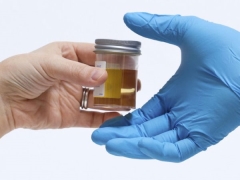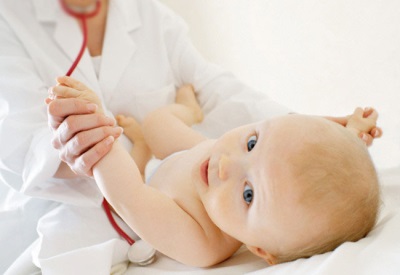Urine analysis in children
There is a urine test among the most commonly prescribed tests for children. The child faces such analyzes already in the first years of life. Why take it for analysis, how to collect the material for research and how to evaluate the results?
Kinds
- General urine analysis - the most common study, which is assigned to identify diseases and preventive examinations of healthy children.
- According to Nechyporenko - a study that is conducted in case of suspected cystitis, pyelo- or glomerulonephritis It is based on counting urine leukocytes, cylinders and red blood cells.
- According to Kakovsky Addis - analysis is carried out to distinguish pyelonephritis from glomerulonephritis, as well as to identify urolithiasis.
- According to Sulkovich - a sample that detects calcium salts.
- According to Zimnitsky - analysis to evaluate the work of the kidneys and to identify renal failure. For him, the urine is collected during the day.
- For tank. sowing - research helps to select an effective antibiotic treatment.
Indications
Depending on the type of analysis, the child may be given to pass urine if:
- He is undergoing prophylactic examination;
- Kidney and bladder diseases are suspected;
- The child suspected diabetes.
- The disease of the organs of the excretory system has already been identified and it is necessary to correct its treatment.
How to collect?
To do a general analysis, the baby’s morning urine in a volume of 50–150 ml surrenders. If you must collect it for a long period, store the collected material in a large container in the refrigerator.
For research on Nechiporenko prescribed collection of a medium portion of urine. The child is asked to start urinating into the toilet, then into the urine collection container and finally into the toilet again.

In adult children
The child is held toilet genitals without the use of disinfectants or antibacterial agents. Then he is offered to urinate into the toilet, and part of the urine enters the container (most often, its medium portion is collected). Collecting in a pot with subsequent transfusion into a container can lead to unreliable results with an excess of white blood cells. You should also make sure that no particles of feces get into the urine.
In infants
Collect urine from very young children is not easy. Mom should know that most babies urinate immediately after feeding, so you need to prepare in advance the container in which it will be collected.
It is quite simple to collect urine from boys - all that is needed is to immerse the penis in a container and wait a little. To collect the urine from the girl, use a saucer to rinse with boiling water.
Now there are special urinals, with which the procedure is even easier.
What is analyzed?
Through urine tests you can find out:
- Her physical performance. These include its color, transparency and density, as well as the presence of odor and acidity.
- The content of biochemical substances. During analyzes, the presence of glucose, bilirubin, protein, bile acids, ketone bodies is evaluated.
- Microscopic data of sediment. Under a microscope, the number of blood cells (erythrocytes and leukocytes), epithelial cells, the presence of microorganisms, mucus, and salts is assessed.
What analysis is considered good?
Good can be called light yellow transparent urine with a pH in the range of 4-7, in which there is no glucose, ketone bodies, protein, salts, bacteria or bilirubin, and red blood cells, epithelial cells, cylinders and leukocytes are represented by single cells in the field of view.
What analysis is considered bad?
You can determine that a urine test is bad, you can still during the collection, because you can notice color changes and turbidity. Also unfavorable indicators include a large number of white blood cells, red blood cells, cylinders and epithelial cells. The doctor will also be alerted by the presence of protein, bilirubin, ketone bodies, glucose, bacteria, fungi, urobilinogen, hemoglobin and salts in the results of the analysis.












